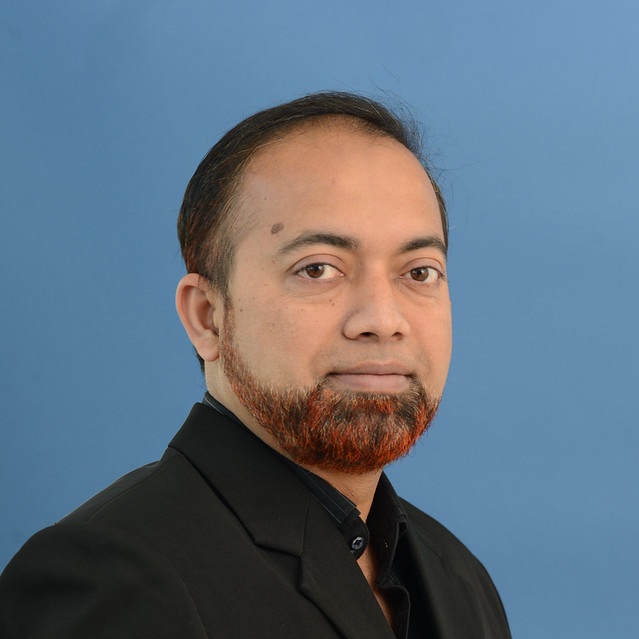Day 2 :
- Power Engineering | Power System | Power Electronics | Electric Power Transmission & Distribution | Power-system Protection

Chair
Bing Wang
Tsinghua University, China

Co-Chair
Albana Ilo
Vienna University of Technology, Austria
Session Introduction
Jobaidur Rahman Khan
University at Buffalo, USA
Title: Implementation of appropriate particle dynamics in CFD for wet compression

Biography:
Abstract:
Jobaidur Rahman Khan
University at Buffalo, USA
Title: Implementation of appropriate particle dynamics in CFD for wet compression

Biography:
Abstract:
Fujin Deng
Aalborg University, Denmark
Title: RMMC-HVDC-Reliable Modular Multilevel Converters for High-Voltage Direct Transmission
Time : 14:10-14:35

Biography:
Abstract:
Bing Wang
Tsinghua University, China
Title: Direct numerical simulation of impinging jets atomization
Time : 14:35-15:00

Biography:
Bing Wang worked as a Visiting Researcher at Technological University of Munich as a Humboldt Fellow. He is now the Vice Deputy Director of School of Aerospace Engineering, Tsinghua University. He has published more than 40 papers in reputed journals and has been serving as an Editorial Board Member of Journal of Engineering. His research interests include fundamentals of turbulent combustion and multiphase flows, combustion instabilities and new conception propulsion, combined cycle power (RDBCC, RBCC, TBCC) and scramjets.
Abstract:
Albana Ilo
Vienna University of Technology, Austria
Title: Distributed LINK-based operational architecture – The foundation of power systems of the new electricity age
Time : 15:00-15:25

Biography:
Abstract:
Rikiya Abe
The University of Tokyo, Japan
Title: GPS synchronized digital grid: Full of renewable energy in the future new grid architecture for renewable energy era
Time : 15:25-15:50

Biography:
Rikiya Abe graduated in the Electronics Engineering from the University of Tokyo and received Doctor degree at Kyushu University, working long time at whole sale power company, J-POWER in Japan. He was a Visiting Researcher at Electric Power Research Institute (EPRI). He is now a Project Professor at the University of Tokyo, Graduate course of Technology Management for Innovation (TMI) from 2008. He developed the Digital Grid concept which represents “Internet of Power”. He established a “not-for-profit organization of Digital Grid Consortium” in September 2011 and is working as a CEO. He is a Co-Chair of Presidential Endowed Chair of the “Electric Power Network Innovation by Digital Grid”, at the University of Tokyo, from June 2012. He also started a venture company, the Digital Grid Inc., to apply Digital Grid technology in the world. The company has started off-grid solution in Tanzania and is operating 550 solar kiosks to provided minimum electricity requirement. His research fields are: Smart Grid, Micro Grid, Digital Grid, Energy Storage, Power Electronics, Demand Response and Demand Fix.
Abstract:
Shu Xian Toh
University of Coimbra, Portugal
Title: Five W’s World Model (FWWM) as a congruent approach in energy policy design
Time : 16:40-16:55

Biography:
Abstract:
Sang Hyeok Chae
Yeungnam University, Republic of Korea
Title: Properties of thermal batteries containing the ceramic felt separators infiltrated using LiCl-KCl and LiFLiCl- LiBr electrolytes
Time : 16:55-17:10

Biography:
Abstract:
Özgün Girgin
Yildiz Technical University, Turkey
Title: A harmonic reduction scheme for 12-pulse thyristor rectifiers
Time : 17:10-17:25

Biography:
Abstract:
- Smart Grid Technologies | Renewable and Non Renewable Energy Sources | Energy Policy | Energy Economics | Energy and Economic Growth | Applications of Energy Engineering

Chair
Rikiya Abe
The University of Tokyo, Japan

Co-Chair
Florin Iov
Aalborg University, Denmark
Session Introduction
Florin Iov
Aalborg University, Denmark
Title: Smart grid operation and control – Challenges for Danish distribution systems operators
Time : 09:30-09:55

Biography:
Abstract:
Sebastian Gerke
IBM Research - Zurich, Switzerland
Title: Industry-scale harvesting and re-use of low grade heat enabled by microtechnology
Time : 09:55-10:20

Biography:
Abstract:
Qiong Cai
University of Surrey, UK
Title: Electrochemical energy technologies for grid energy storage
Time : 10:20-10:45

Biography:
Abstract:
Fabio Matteocci
University of Rome “Tor Vergataâ€, Italy
Title: Organometal-halide perovskite solar cell: High efficiency, up-scaling process and stability
Time : 11:05-11:30

Biography:
Abstract:
Ayse Ergun Amac
Kocaeli University, Turkey
Title: An assesment on energy profile and strategy of Turkey under European Union perspective
Time : 11:30-11:55

Biography:
Abstract:
Berrin Kursun
Marmara University, Turkey
Title: Are renewable energy technologies really sustainable: Is less bad good enough?
Time : 14:00-14:25

Biography:
Abstract:
Emad M Masoud
Benha University, Egypt
Title: Polymer nano composites electrolytes for lithium ion batteries: Science and technology
Time : 14:25-14:50

















